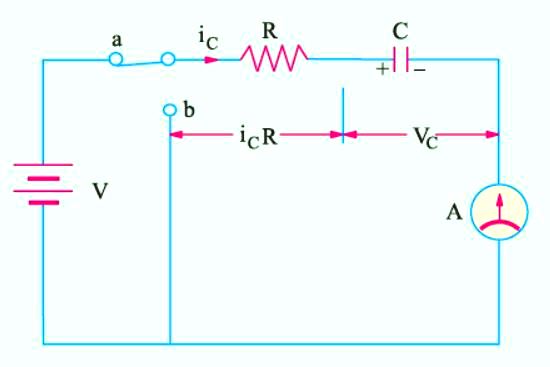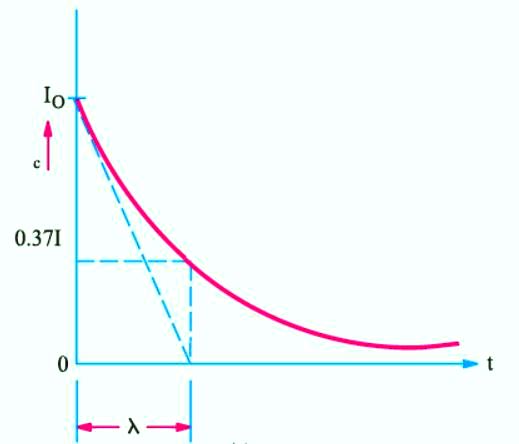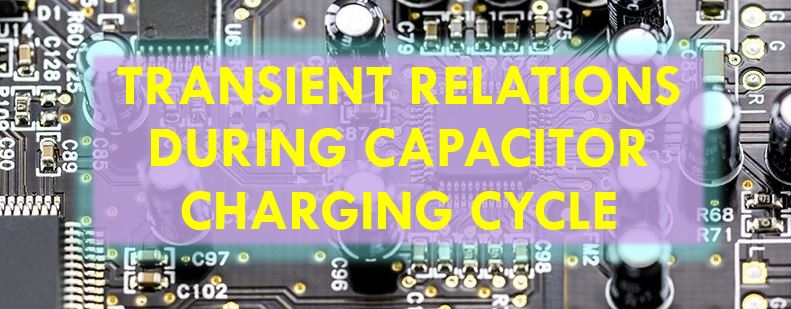Charging of a Capacitor
In the figure given below is shown an arrangement by which a capacitor C may be charged through a high resistance R from a battery of V volts. The voltage across C can be measured by a suitable voltmeter.
When switch S is connected to terminal (a), C is charged but when it is connected to b, C is short circuited through R and is thus discharged.

As shown in the figure given below, switch S is shifted to a for charging the capacitor for the battery. The voltage across C does not rise to V instantaneously but builds up slowly i.e. exponentially and not linearly. Charging current ic is maximum at the start i.e. when C is uncharged, then it decreases exponentially and finally ceases when potential difference across capacitor plates becomes equal and opposite to the battery voltage V. At any instant during charging, let
vc = potential difference across C;
ic = charging current
q = charge on capacitor plates
AdBlock-2

The applied voltage V is always equal to the sum of :
(i) resistive drop (ic R) and (ii) voltage across capacitor (vc)
∴ V = icR + Vc …………………………………..(i)

Integrating both sides, we get

where K is the constant of integration whose value can be found from initial known conditions. We know that at the start of charging when t = 0, vc = 0.
Substituting these values in (iii), we get logc V = K
Hence, Eq. (iii) becomes


This gives variation with time of voltage across the capacitor plates and is shown in Figure shown below.

Now vc = q/C and V = Q/C
Equation (iv) becomes

We find that increase of charge, like growth of potential, follows an exponential law in which the steady value is reached after infinite time (Figure shown below).

Differentiating both sides of Eq. (v), we get


where I0 = maximum current = V/R Exponentially rising curves for vc and q are shown in Figure given above which shows the curve for exponentially decreasing charging current. It should be particularly noted that ic decreases in magnitude only but its direction of flow remains the same i.e. positive.
As charging continues, charging current decreases according to equation (vi) as shown in Figure given above. It becomes zero when t = ∞ (though it is almost zero in about 5 time constants). Under steady-state conditions, the circuit appears only as a capacitor which means it acts as an open-circuit.
Similarly, it can be proved that vR decreases from its initial maximum value of V to zero exponentially as given by the relation vR = V e−t/λ
Read article – Transient Relations During Capacitor Charging Cycle
Visit NCERTplanet.com for NCERT solutions and Textbook downloads




